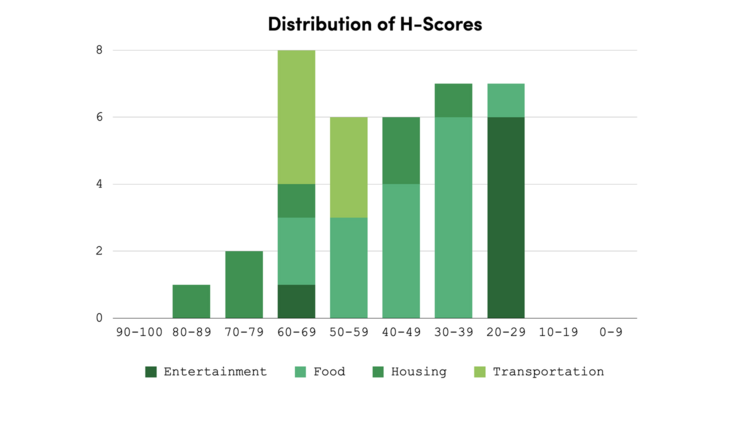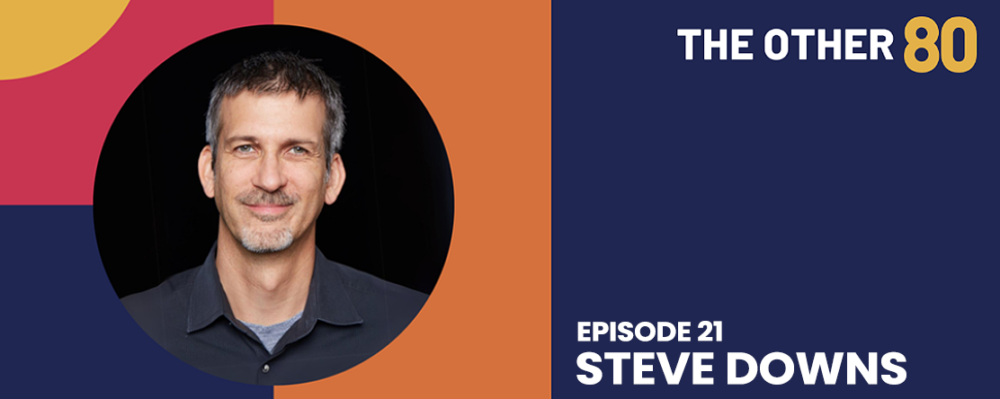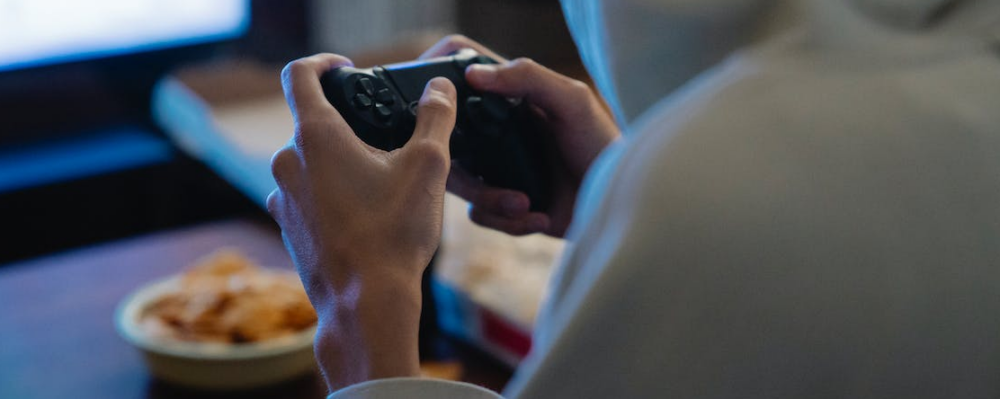
The 2022 Building H Index
- Steve Downs, S.M., B.S.
- Thomas Goetz, Sara Singer, Nathaniel Braun, Esther Olsen, Samir Khanna, Brittany Sigler, Ali Rostami, Ramesh Jain, Wael Kanj, Samara Shima
-
Focus Areas
Chronic Disease Prevention, Data, Technology & Innovation, Health Care & Population Health -
Issues
Population Health -
Programs
Building H

The products we use in our everyday life influence our health, but too often, these health outcomes are overlooked, if not altogether ignored.
The Building H Index 2022 report rates and ranks 37 products and services—across the entertainment, food, housing and transportation industries—on the influences that they have on five behaviors: eating, physical activity, sleeping, engaging socially and spending time outdoors. Building H is a program at the Public Health Institute.
The Index provides detailed reports on each company’s product, as well as overall trends by industry. It also includes specific recommendations for how products can shift to help support health and wellbeing.
Explore the IndexIn the past decade, we’ve seen a profusion of innovations intended to help people change their behaviors: step and sleep trackers, diet apps, meditation apps. We’re seeing some of the most sophisticated technologies on earth being applied to the detection of chronic heart conditions and other warning signs. And yet, more than 10 years into the digital health era, our collective health keeps getting worse.
Too many of these innovations have focused on individual change, putting the onus on individuals to overcome the challenges that modern life creates. At Building H, we believe it’s time to flip the script. In addition to helping people tackle the challenges, society needs to foster a collective effort to reduce these challenges—to make it less hard to be healthy.
Key findings
- The 37 products and services show a wide range of influences on health.
- The nature of the product/service was a much stronger determinant of its score than the particular company’s implementation of that product/service.
- Products had influences across multiple behaviors.
- The housing industry has a strong influence on health behavior.
- A number of product categories reinforce recent trends of staying home.
- Services that counter prevailing industry trends demonstrated highly positive influences.
- Every product could have a healthier version of itself.

The Building H Index: A Deep Dive on How Products Influence Health
The 37 products and services we examined show a wide range of influences on health, with some having very positive influences and some quite negative. 45% of the profiled products have net-positive influences, showing that it is very much possible to design products in these industries that lead customers to healthy behaviors. Apartment management companies did very well, fast food ranked poorly, and video streaming received the feeblest results.
Opportunities and recommendations
- Follow the lead of the contrarians.
- Stop pushing excess consumption.
- Ask for user preferences and honor them.
- Use defaults to normalize healthy behaviors.
- Develop and embed rating systems for the healthfulness of food items, meals and restaurants.
- Establish bedtime modes across services.
While this report discusses a number of specific opportunities, both above and within the product profiles, the fundamental opportunity, for all companies, is to become allies with their customers to choose to support them in leading healthier lives.
Work With Us
You change the world. We do the rest. Explore fiscal sponsorship at PHI.
Support Us
Together, we can accelerate our response to public health’s most critical issues.
Find Employment
Begin your career at the Public Health Institute.


